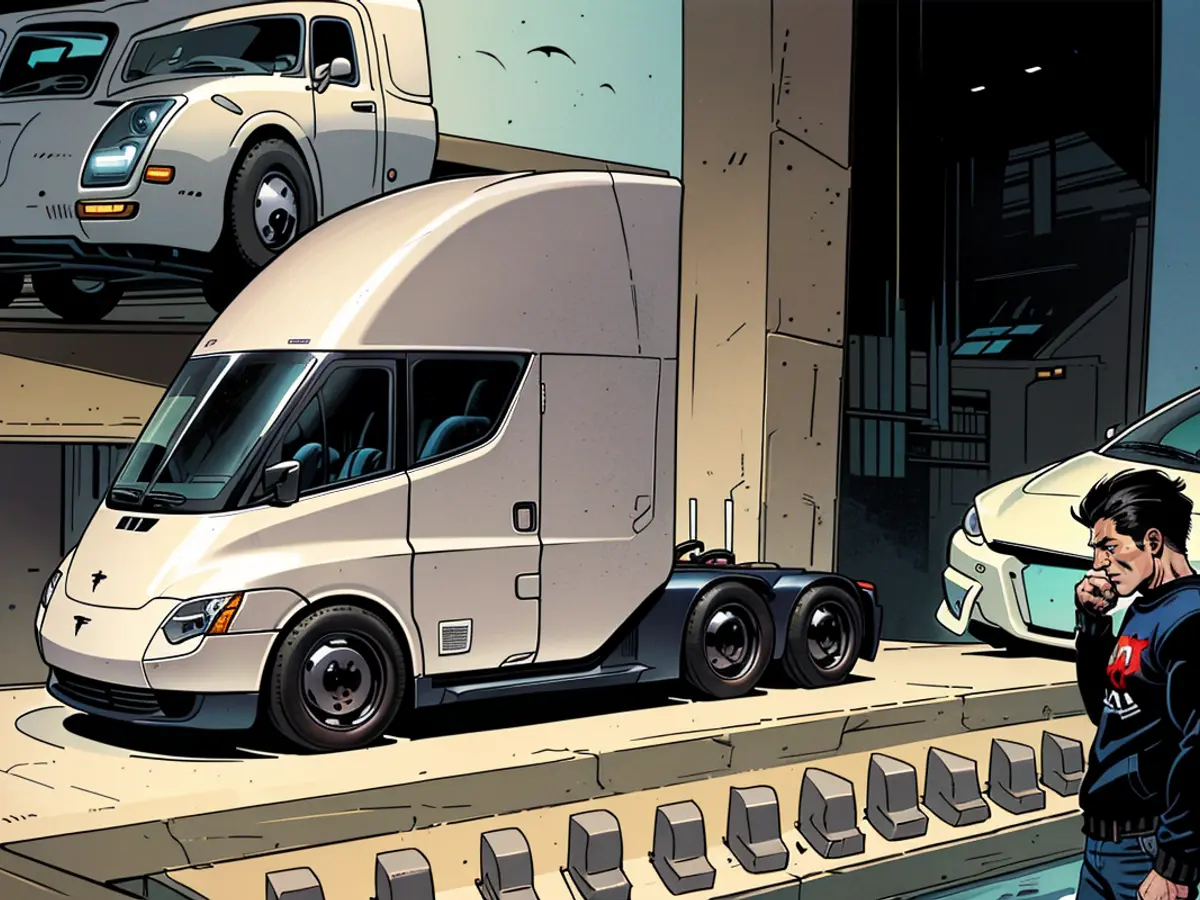Emergency services require around 200,000 liters of water to extinguish the Tesla truck inferno.
Sure thing, here's a different take on the situation:
Instead of just manufacturing electric cars, Tesla's also got its sights set on an electric semi-trailer truck. A few of these bad boys are already out and about, but on August 19, one of 'em met its end in an accident in California. This caused quite the headache for the firefighters trying to put out the fire, as the massive battery system inside was a beast to tame.
In the Golden State, firemen needed around 190,000 liters of water to douse the flames engulfing the Tesla semi-truck after the unfortunate incident. As per the National Transportation Safety Board's declaration on August 19 (PST), these brave individuals had to employ large quantities of water to snuff out the flames and cool the enormous vehicle batteries. A firefighting plane was even called in, armed with fire retardant, to prevent the burning truck from sparking a wildfire in the nearby environment.
The Tesla Semi smash-up happened near Emigrant Gap, a pass in the Sierra Nevada mountains, California. A Tesla employee was at the wheel, driving the truck from Livermore to a Tesla facility in Nevada.
The vehicle went off the road in a curve, collided with a tree, and rolled down an embankment, hitting more trees before coming to a halt, as per the report. The driver emerged unscathed. The electric lithium battery system ignited in the crash, igniting a fire. The busy road was closed for 15 hours due to the complex fire extinguishing attempts.
Elon Musk, the CEO of Tesla, initially unveiled the design of the Tesla Semi in November 2017, pledging it would hit the market in 2020. Some units have already made their way into the hands of companies like PepsiCo. However, Tesla has yet to kick-start large-scale production. The setup for the production lines is underway at the Tesla plant in Nevada, with mass production scheduled to commence next year.
After the accident, emergency services had to contend with other vehicles being diverted due to the road closure, making traffic management challenging. Furthermore, the portability of the damaged Tesla semi-truck's batteries posed logistical concerns for the clean-up and disposal process, involving other organizations.








